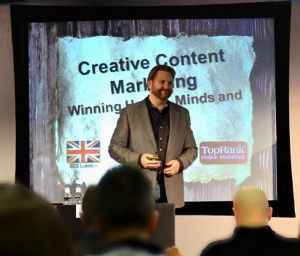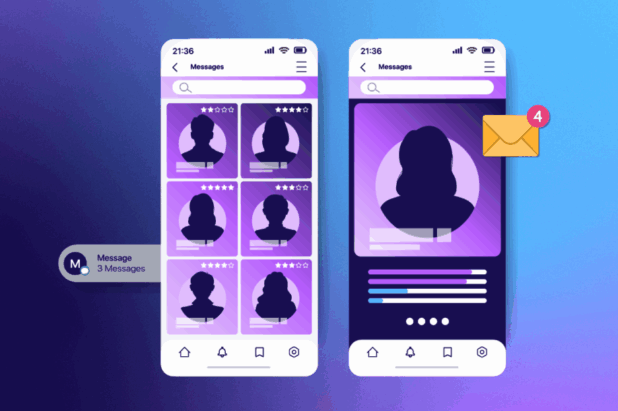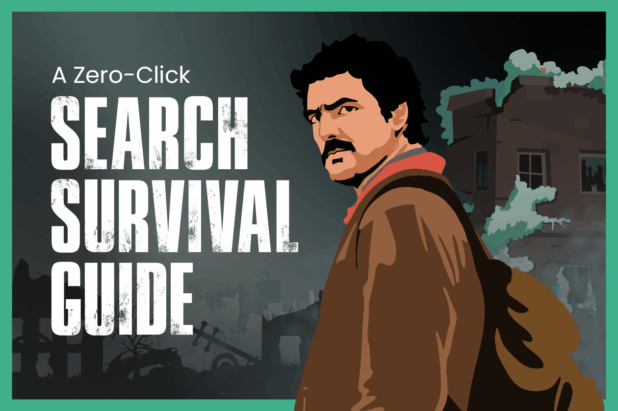 You’ve heard the saying, “What’s the one thing people fear more than death? Public Speaking”.
You’ve heard the saying, “What’s the one thing people fear more than death? Public Speaking”.
That’s why so few people do it. That’s why I avoided it at all costs for many years.
But then I became so interested and passionate about the work I was doing, I decided to accept a speaking request in 2005. At 7am in the James J. Hill Library in St. Paul, I presented “Organic SEO, PPC, Blogging – What does it all mean?” to a group of about 70 people.
And I didn’t die.
Since then, I’ve given presentations all over the world, from New York to London to Hong Kong and next month Madrid and Moscow.
The funny thing is, I’m not a natural public speaker. I’ve had to work at it. I’m STILL working at becoming a great “infotainer”. Along that journey I’ve been able to learn a few things that might be helpful to other reluctant or new speakers who have a chance to represent yourselves or your company in a public forum.
Check out these 8 quick tips and try them out.
1. Make sure you create the presentation with the audience in mind. Think about what they might want to know vs. what you want to share or promote. To do this, ask the event organizer about who the attendees are. Types of companies, position titles, etc.
2. Ask a qualifying question at the beginning – an easy to answer, but thoughtful question to show you are interested in them. To make sure you don’t forget, put this question into your presentation and include an illustration. Make it funny, but most of all, make it relevant.
3. Tell stories. Back them up with stats or examples, but what’s most interesting are stories. As I like to say, “Facts tell, stories sell”. Use a story as a metaphor that aligns well with the key points you are making. Or relate real world experiences you’ve had as an example. I’ve shared my story of social crowdsourcing the itinerary of a trip I took to NYC with my son and the social sharing and content creation that resulted many times as a way to introduce the notion of consumer information discovery, consumption and action.
4. Optimize your slides. Make slides visual and include tweetable quotes and stats. Include your Twitter handle and the event hashtag (if there is one) in the footer or header of each slide. People WANT to tweet interesting and useful things to their networks, so why not make it easy for them? Don’t be so coy as to ask the audience to tweet a particular slide. But do make quotes in large text that are compelling and even provocative. If it’s good, they’ll share it.
5. Be enthusiastic, but don’t talk too fast. Don’t go too slow either. Presenting in a routine and subdued way can be boring for an audience. However, speaking so fast that they can’t comprehend the full value of what you’re saying is even worse. I’ve found this out in my efforts to be “info-taining” that sometimes I speak too fast. There is the belief among some speakers that you should cram as much information into your deck as possible. But if the audience can’t understand you, it can be incredibly frustrating.
When you’re passionate about a topic, audiences won’t care if you miscue or make verbal mistakes. Laugh at those roadbumps and focus on telling your story and sharing your information. Remember to take a breath after a key point and let it sink in for the audience. That gives them time to absorb (and tweet).
6. Always include takeaways. Create an outline of our presentation and then use that outline to distill 3-5 key points. I often write these key points as large text slides and then compile them all into one takeaway slide at the end. This reinforces the key points your making and helps the audience summarize in their mind what you’re trying to convey.
7. Give them something to do at the end. Download, contact you or a task. Challenge them to take the next step. When you’ve captured people’s attention for 45 minutes, they are looking to you for leadership. For direction. If you’ve been effective at presenting your point of view, then help translate the experience they just had listening to you into something tangible.
8. Have fun! A few years ago when I keynoted a conference in Minneapolis, I made up an illustrated rhyme to tell the story. This was out of my comfort zone but the story was near and dear, so it was fun to do. People still come up to me at events in the Twin Cities and mention that presentation because it was fun and interesting, not just educational.
Remember, that audiences are mostly interested in “info-tainment”. Be yourself and show your personality. Do your best to connect with the audience and they’ll open up to your information.
What are some of the tips you’ve learned from public speaking?


